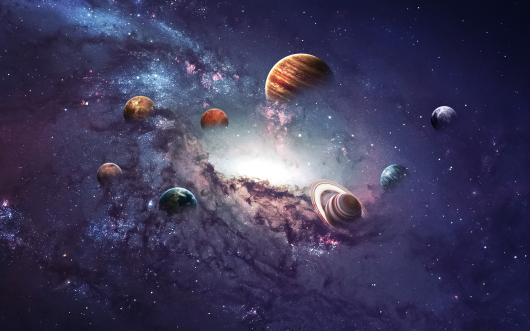The study of nuclear matter under extreme temperature and pressure conditions, like those close to the Big Bang, is a central focus of collider experiments in the powerful particle accelerators at CERN and the Brookhaven National Laboratory.
Rasmus Normann Larsen, at the Department of Mathematics and Physics at the University of Stavanger and his fellow researchers, study the interactions of particles called Hadrons, which are made up of quarks and anti-quarks and bound together by the strong nuclear force. In 2021, they were awarded computing time on the PRACE Tier-0 systems.

Exploring quark binding and temperature effects
Larsen and his team are looking for the effective potential that binds the quark and anti-quark together, similar to how planets are bound to the star that they orbit. The researchers also want to know how this binding changes as the temperature reaches billions of degrees Celsius. Computer simulations are used to calculate the effective potential by averaging over the fluctuations of the quantum fields, that is the quarks. However, it is impossible to calculate all possible fluctuations of the quantum fields, so the researchers find the most likely fluctuations using Rational Hybrid Monte-Carlo simulations – a type of random walk algorithm. When the most likely fluctuations have been found, they calculate the probability of the quark and anti-quark to be separated.
— We hope to have a good description of the effective potential between quarks and anti-quarks, at temperatures similar to those observed at the large hadron collider, says Rasmus Normann Larsen at the University of Stavanger. —This should help to better understand the state of matter in the early universe. Currently many proposals for how these interactions behave exist, but there are large uncertainties. We hope to clear up these uncertainties and provide a much more specific description of the quark and anti-quark system.
High-performance computing for large-scale QCD research
The code responsible for generating fluctuations relies on GPU computations and is written in C++ and CUDA. This code is an integral part of the HotQCD collaboration, which delves into Quantum Chromodynamics (QCD), studying quarks and the strong force at temperatures reminiscent of the early universe.
These computations are substantial, with each output file containing just one fluctuation occupying 10 GB of storage. The research team generates thousands of these files for measurements, resulting in a data volume exceeding 100 TB. To handle such immense calculations, the project has been granted access to the Juwel Booster supercomputer through the Prace award